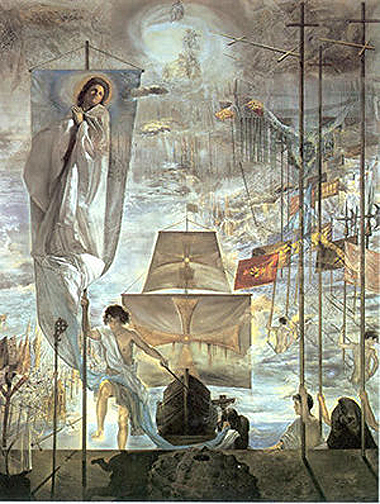Facts About The Discovery of America By Christopher Columbus
"The Discovery of America by Christopher Columbus" painted by Salvador Dalí in 1959, is a breathtaking masterpiece that stands over 14 feet tall and 9 feet wide. This monumental artwork is part of a series Dalí created during that period, highlighting his profound connection to his Spanish heritage by weaving together themes of history, religion, art, and myth.
The painting was commissioned by Huntington Hartford for the grand opening of his Gallery of Modern Art at 2 Columbus Circle in New York. It also alludes to the ongoing debate among Catalan historians who argue that Columbus was actually from Catalonia, not Genoa, Italy.
In this imaginative depiction of Columbus's first landing in the New World, Dalí portrays Columbus as a youthful figure dressed in a classical robe, symbolizing the untapped potential and new beginnings of America. Dalí's Roman Catholic mysticism is evident as he presents Columbus's introduction of Christianity to the New World as a noble and significant act. Dalí's wife, Gala, appears in the painting as the Blessed Virgin or Saint Helena on Columbus's banner, underscoring her profound influence on his work.
Dalí pays homage to Diego Velázquez by incorporating elements from Velázquez's "The Surrender of Breda" such as the spears and a crucified Christ. He even includes himself in the painting as a kneeling monk holding a crucifix, alongside an old Catalan flag to emphasize his belief in Columbus's Catalan heritage. The beach scene, complete with a sea urchin encircled by a halo-like ring, adds another layer of symbolism to the piece.
Today, this magnificent painting resides in the Salvador Dalí Museum in St. Petersburg, Florida, as part of the A. Reynolds Morse and Eleanor R. Morse collection.

 Mexico
Mexico